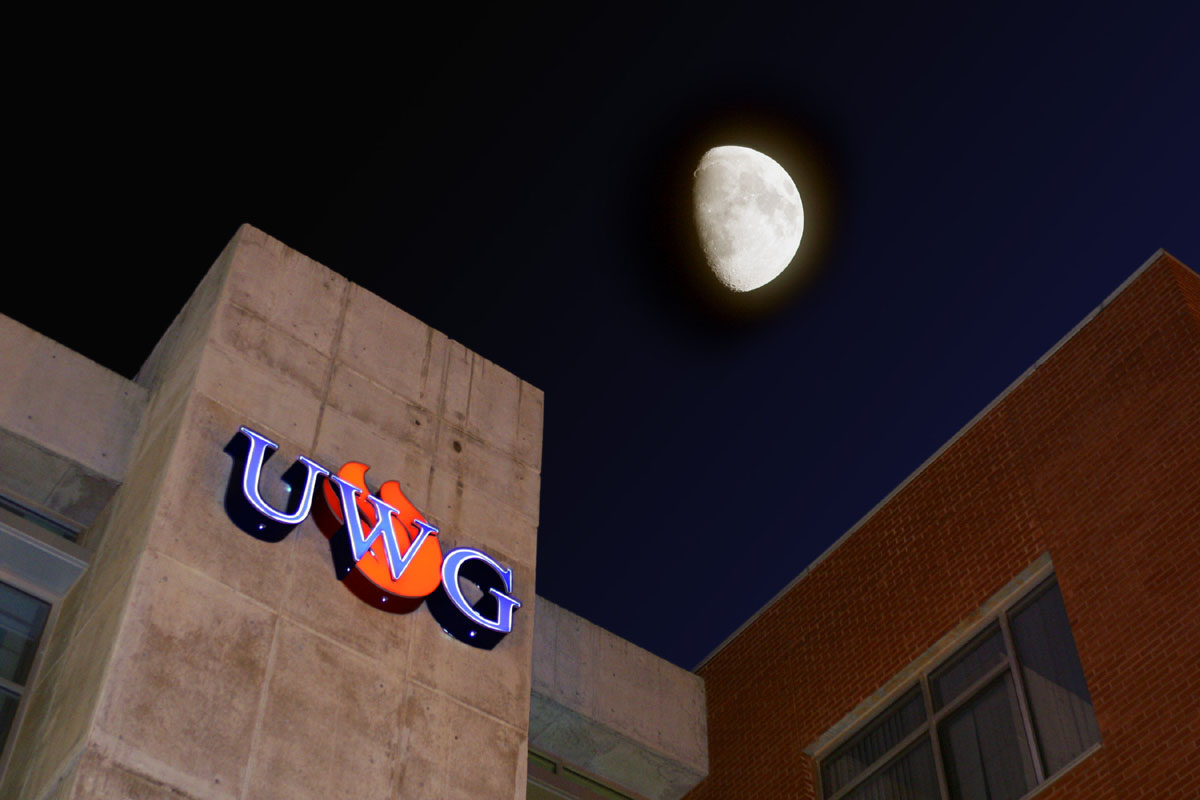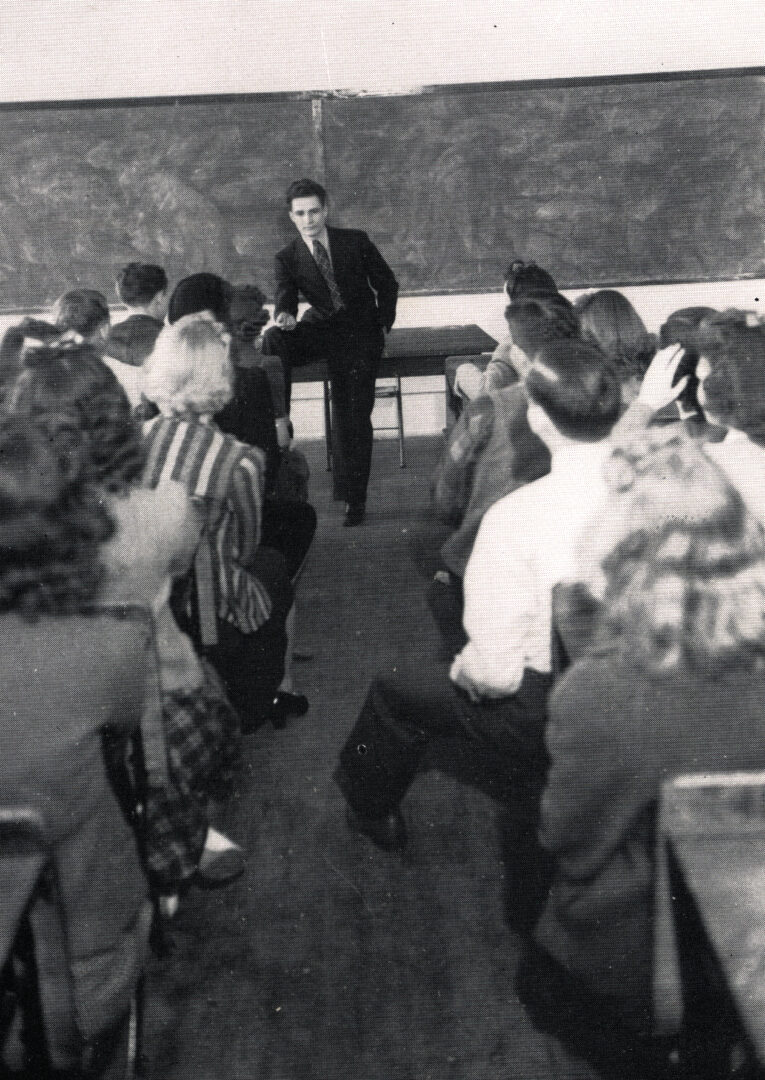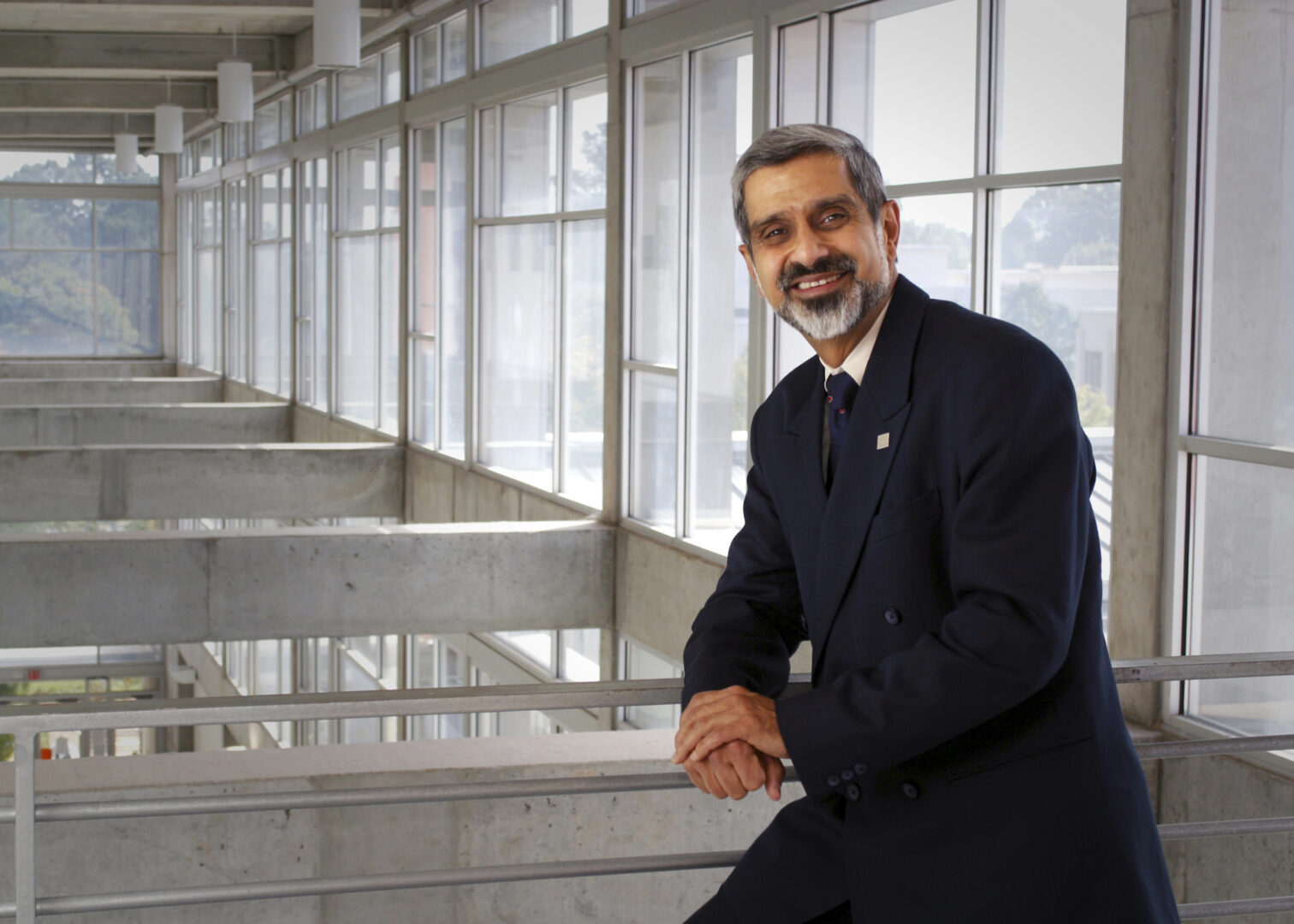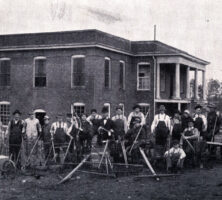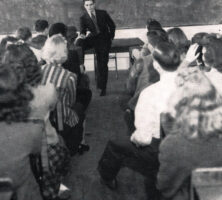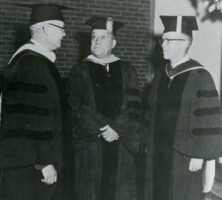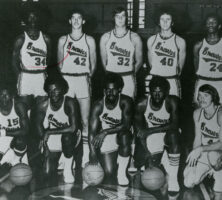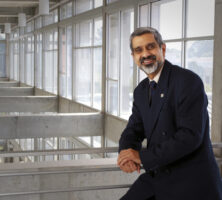Established in 1906, the University of West Georgia is a coeducational, residential, liberal-arts institution with an enrollment of more than 10,000. The university consists of four undergraduate colleges—the College of Arts and Sciences, the College of Education, the Richards College of Business, and the Honors College—and the Graduate School. The university draws students from most counties in Georgia as well as from other states and several nations.
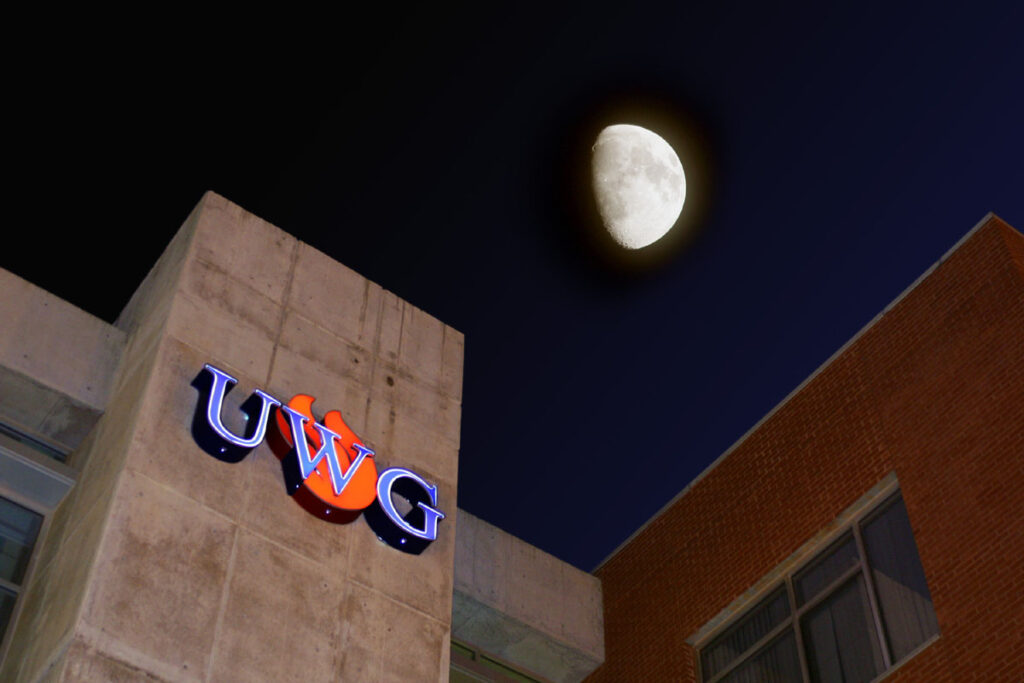
Photograph by Steven Broome, University of West Georgia
Agricultural and Mechanical School
In 1906 the state legislature passed the Perry Act, which created an agricultural and mechanical school in each of the eleven (later twelve) congressional districts in the state. These secondary schools were designed to better prepare rural youth for farm life. Graduates were also qualified for college admission. The site selected for the agricultural and mechanical school in the Fourth Congressional District was a large 275-acre farm west of Carrollton.
The new institution opened its doors in January 1908 under the leadership of John H. Melson, the school’s first principal. In 1920 Irvine S. Ingram became the principal and served as such until 1933, when the Fourth District Agricultural and Mechanical School became a junior college.
Junior College
When the Great Depression began, in 1930, it became readily apparent that there were too many state-supported schools, each separately lobbying the General Assembly for funding. Governor Richard B. Russell Jr. led the creation of a university system to be administered by a chancellor and Board of Regents. Because the agricultural and mechanical schools were secondary schools, all those not previously converted to institutions of higher education were abolished. Even some of the existing institutions of higher education were told that they would no longer receive state funds.
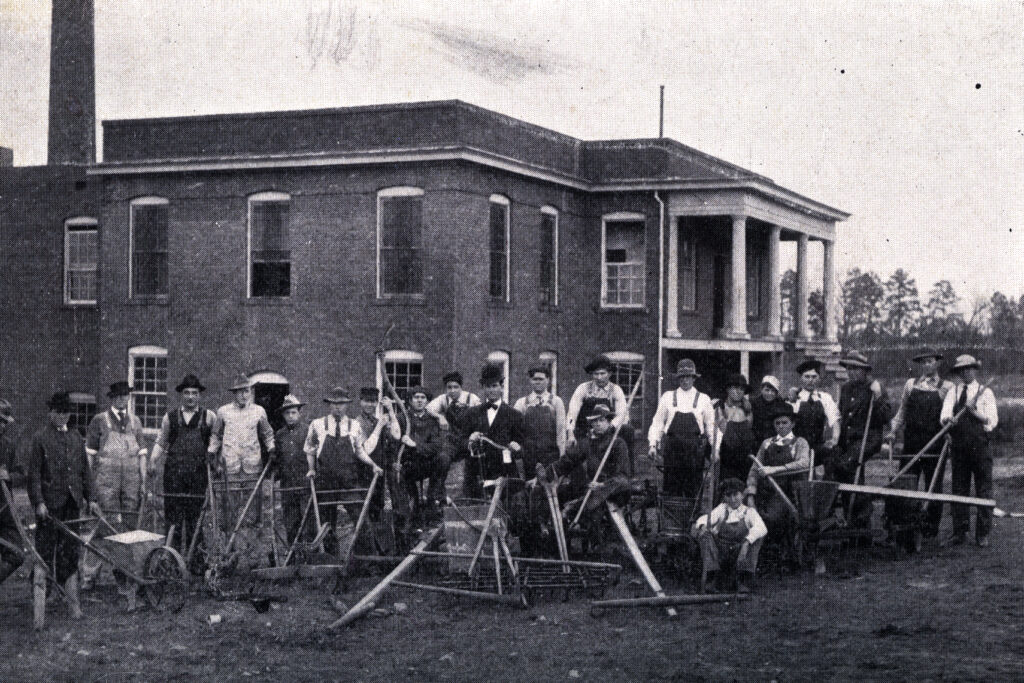
Courtesy of Irvine Sullivan Ingram Library Special Collections, University of West Georgia
The board decided that only one state-supported educational institution was needed west of Atlanta and that this would be a junior college called West Georgia College. Three former state-supported schools, the Fourth District Agricultural and Mechanical School at Carrollton, the Seventh District Agricultural and Mechanical School at Powder Springs, and Bowdon College at Bowdon, competed to become the location of this new junior college. Carrollton was selected, and Ingram became president of the new West Georgia College, which opened its doors in the fall of 1933 on the campus of the former Fourth District school.
In 1937 West Georgia College, with support from the Julius Rosenwald Fund, launched an experimental rural education project that continued for almost a decade and attracted national media attention. The renowned artist Norman Rockwell visited West Georgia College, and a collection of drawings he made in one of the local schools was featured in the Saturday Evening Post on November 2, 1946. Part of the rural education project involved work in what were then known as the “Negro schools.” Dannetta Sanders, the Black supervisor of the Negro schools, regularly met withother project personnel and around this time was listed as a faculty member in the college bulletin. Two other faculty members, Robert M. Strozier (later president of Florida State University in Tallahassee) and Thomas A. Hart (later dean of students at Roosevelt University in Chicago, Illinois), led annual student trips to Tuskegee University. Only strong community support, especially that of Governor Eugene Talmadge’s sister, Nettie Tyus (for whom Tyus Hall is named), allowed Ingram to engage in these interracial activities during the era of segregation.
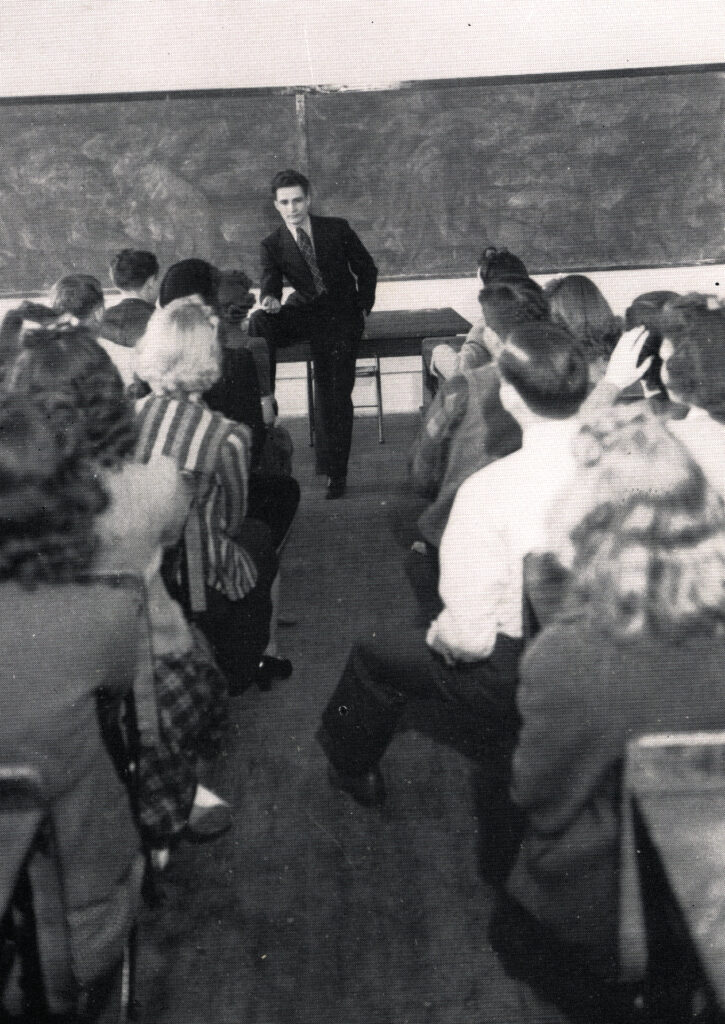
Courtesy of Irvine Sullivan Ingram Library Special Collections, University of West Georgia
During the 1950s West Georgia College attained worldwide prominence with its College in the Country, a program of adult education aimed at the many adults who, because of the depression, had been unable to continue their education. For many years the college’s Delbert Clark Award was the top prize for adult educators in the United States.
Senior College
The college’s growth in enrollment and curriculum earned it senior college status in 1957. In 1960 Ingram retired after a remarkable tenure of forty years at the helm of the Carrollton institution, having served thirteen years as the principal of Fourth District Agricultural and Mechanical School and twenty-seven years as the president of West Georgia College.
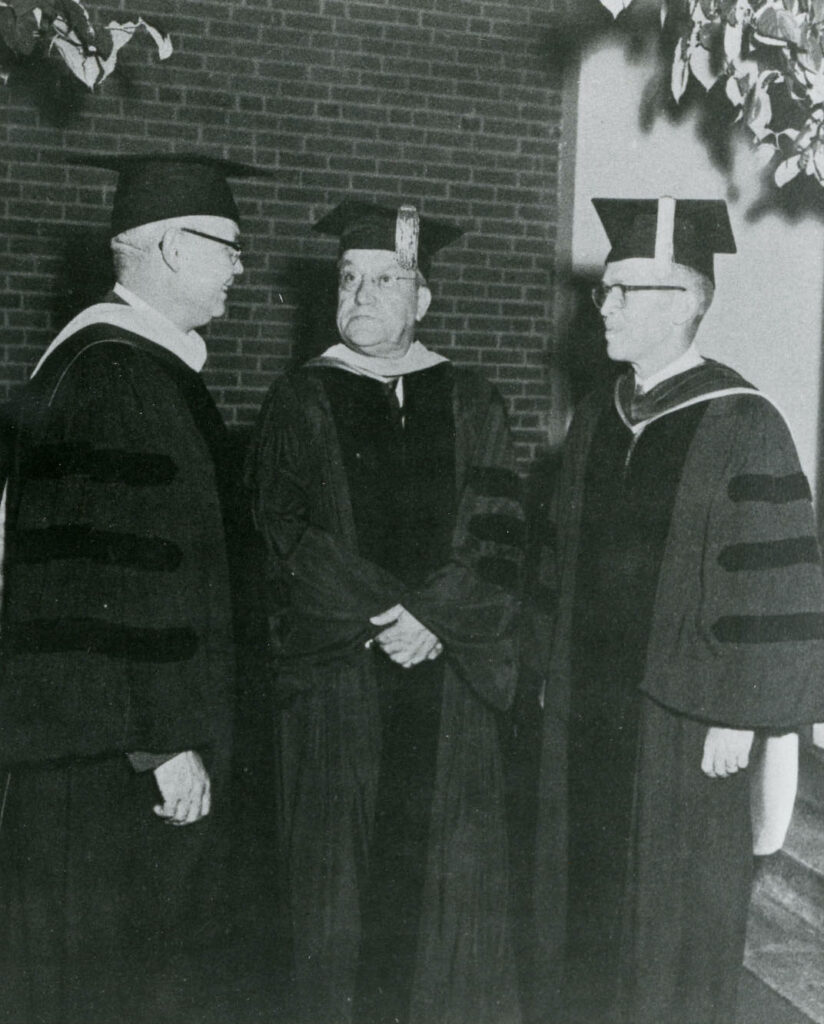
Courtesy of Irvine Sullivan Ingram Library Special Collections, University of West Georgia
William H. Row, a respected educator who had been dean at West Georgia College, took Ingram’s place. He suffered a fatal heart attack after only nine months as president and was succeeded by James Emory Boyd. Boyd had been a member of the college’s original faculty but after two years had gone on to the Georgia Institute of Technology in Atlanta, where he had been a key person in the development of that school’s nuclear program and a founder of the Scientific Atlanta corporation.
During the challenges of the 1960s, Boyd acted with a boldness uncharacteristic of many university presidents. In the summer of 1963 he invited a young Black woman, Lillian Williams, to attend West Georgia College, thereby integrating the college without incident and without waiting for a court order. The following year, in May 1964, Boyd invited Robert F. Kennedy to Carrollton for the dedication of the campus chapel as Kennedy Chapel, in honor of the late U.S. president John F. Kennedy.
During the Boyd years, enrollment at the college jumped from 1,089 to 5,503. Nineteen major building projects were completed, nine of them dormitories. In 1967 the first master’s degree program was added. As at other institutions of higher education, student protests, antiwar rallies, and drug busts occurred during the tumultuous years of the 1960s.
In 1971 Ward B. Pafford became the fourth president of West Georgia College, succeeding Boyd, who had become a vice chancellor of the university system. A literary scholar, Pafford helped to restore a deteriorating relationship between the college and the local community and inaugurated a faculty senate. In 1974 the West Georgia College basketball team won the National Association of Intercollegiate Athletics national title. Pafford’s tenure was short but productive. In 1974 he decided to return to his first love, the classroom.
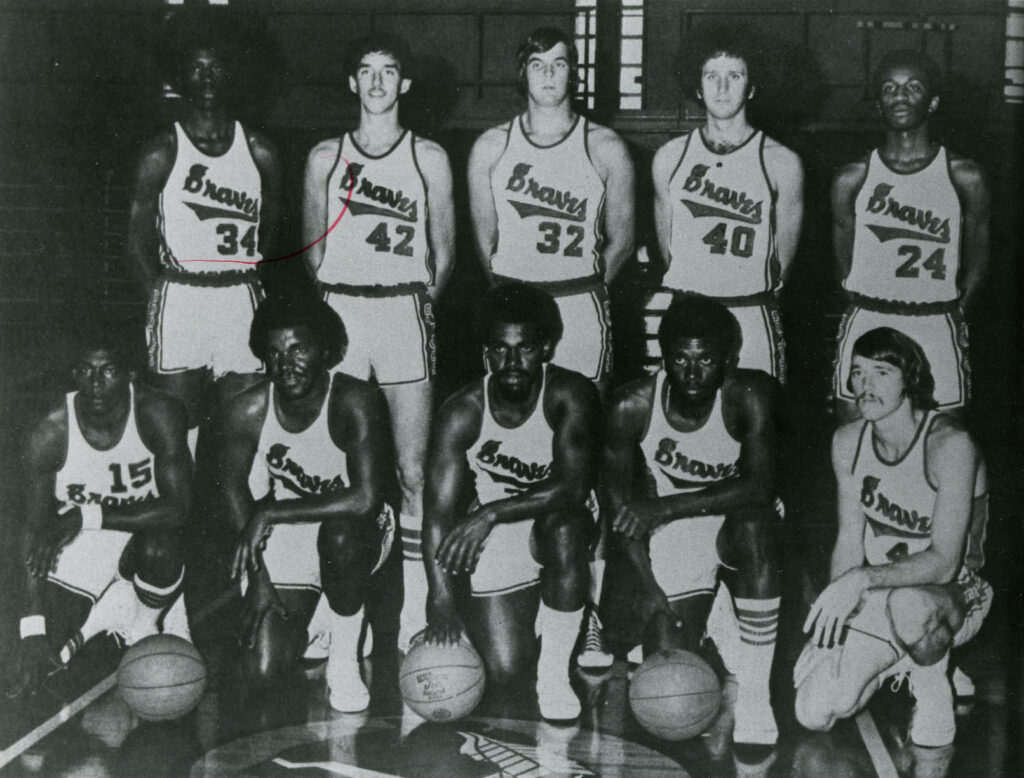
Courtesy of Irvine Sullivan Ingram Library Special Collections, University of West Georgia
In 1975 Maurice K. Townsend became the fifth president of West Georgia College and served until his death in 1993. A political scientist with experience in government and business, as well as in education, Townsend stressed good administrative practices and sound fiscal management. He also became known as the “personal president” by virtue of his interaction with faculty and students. He often invited students into his office to discuss their concerns, and on many evenings he could be found at Student Government Association meetings and student forums. In 1981 a football program was initiated, and in 1982 the football team, the West Georgia Braves, won the National Collegiate Athletic Association Division III national championship.
University Status
Beheruz N. Sethna, a native of Bombay, India, became West Georgia’s sixth president in 1994 and the first person from an ethnic minority to head a predominantly white or racially integrated state higher educational institution in Georgia. A Fulbright scholar with a marketing and management background, as well as extensive experience in private business, Sethna immediately established himself as a dynamic leader. When the dormitories opened for the fall quarter of 1994, he was there, clad in blue jeans, welcoming students and helping them unload their possessions. He has continued the Ingram and Townsend tradition of being a classroom teacher while serving as president.

Photograph by Steven Broome, University of West Georgia
On June 12, 1996, West Georgia College was granted university status as the State University of West Georgia, making Sethna the first native of India to become president of a U.S. university. Under Sethna’s leadership the university has reached an enrollment of more than 10,000 students. In 1998 the university received approval for its first doctoral program and in June 2004 awarded its first doctoral degree. On January 12, 2005, the Board of Regents voted to rename the institution the University of West Georgia.
In 2004 the university completed a new masterplan. The focus of the plan is the Technology-enhanced Learning Center (TLC), which was completed in 2001. The defining feature of this $20 million, 110-square-foot, three-story, state-of-the-art building is the “smart” classroom in which every student has a computer at his or her desk. Across from the TLC is the Townsend Center for the Performing Arts, which houses two theaters. Two new buildings are planned: a health and wellness center to replace the old gymnasium and a new student center. The campus totals nearly 660 beautifully maintained acres and is especially attractive during the spring, when the dogwoods and azaleas are in bloom.
The University of West Georgia offers a wide range of disciplinary, interdisciplinary, and professional programs at the baccalaureate level. It is also a major provider of graduate education at the master’s and educational specialist’s levels; further, the university offers a stand-alone doctoral program in education. In addition to being accredited as an institution of higher education, the university has earned accreditation or recognition in most undergraduate and graduate fields of specialization.
Under the tutelage of a faculty guided by the motto “educational excellence in a personal environment,” West Georgia students have been very successful. The debate team has qualified for the National Debate Tournament for thirty-three consecutive years (1972-2005), the fifth longest streak in the country, and since 1999 has always finished in the top ten. For the fifth time in the past seven years, more students from the Honors College have been accepted to present research at the annual meeting of the National Collegiate Honors Council than from any other college or university in the country. From 2002 to 2005 the university coed cheerleaders won the Universal Cheerleaders Association College Cheerleading National Championship in Division II. Alumni support has been strong, and “A DAY for West Georgia” donations annually exceed $1 million.
In 2006, following a directive from the National Collegiate Athletic Association to eliminate the use of team names associated with Native Americans, the university changed its team name from the Braves to the Wolves.





